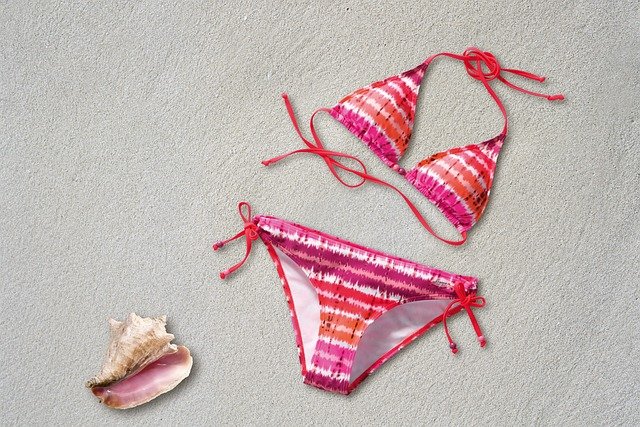Bikini trends 2025: What's new in women's swimwear?
As the swimwear industry continues to evolve, new styles and designs emerge each season. While predicting exact trends for 2025 is challenging, we can examine current directions in women's swimwear to gain insights into potential future developments. This article explores some possible trends that may shape bikini styles in the coming years, based on ongoing shifts in fashion and consumer preferences.

What materials may gain popularity for bikinis?
Sustainability and eco-friendly fabrics are likely to play an increasing role in swimwear. Recycled materials like regenerated nylon made from recovered ocean plastics could become more prevalent. Innovations in fabric technology may also lead to new performance materials that offer enhanced comfort, UV protection, and quick-drying capabilities. Natural and biodegradable textiles like hemp or algae-based fabrics might see wider adoption as brands focus on reducing environmental impact.
How might bikini cuts and silhouettes evolve?
Recent years have seen a resurgence of high-waisted and retro-inspired bikini bottoms. This trend may continue to develop, with new variations on vintage silhouettes. At the same time, minimalist designs and barely-there styles remain popular among some consumers. Future bikinis could feature asymmetrical cuts, creative cutouts, or convertible designs that allow for multiple styling options. The industry may also see increased focus on inclusive sizing and fits that cater to diverse body types.
What color palettes and prints could emerge?
While classic solid colors and nautical stripes are perennial favorites, upcoming bikini collections may experiment with bolder hues and patterns. Earthy tones inspired by nature could gain traction, along with vibrant tropical prints. Digital printing techniques may allow for more intricate and personalized designs. Abstract patterns, geometric shapes, and artistic collaborations might also influence swimwear aesthetics in the coming years.
How might technology integrate with bikini design?
Advancements in wearable technology could potentially impact swimwear. While still speculative, future bikinis might incorporate features like UV sensors to monitor sun exposure, temperature-regulating fabrics, or even augmented reality elements for virtual try-ons. Smart textiles that change color or pattern based on environmental factors represent another area of potential innovation, though widespread adoption remains uncertain.
What fit and sizing considerations may become more prominent?
As body positivity movements continue to gain momentum, the swimwear industry may place greater emphasis on inclusive sizing and fit options. This could lead to more brands offering extended size ranges and customizable elements to accommodate different body shapes. Advanced 3D body scanning and digital fitting technologies might also play a role in creating more personalized bikini fits.
How are top bikini brands adapting to changing consumer preferences?
Major swimwear brands are continuously evolving their offerings to meet shifting consumer demands. Some focus on sustainability initiatives, while others prioritize inclusive sizing or innovative designs. Here’s a comparison of how some established brands are approaching current market trends:
| Brand | Sustainability Focus | Size Range | Notable Features |
|---|---|---|---|
| Summersalt | Recycled materials | XXS-22 | Compression fabric, color-blocking designs |
| Cupshe | Eco-friendly packaging | XS-4X | Affordable price point, trendy styles |
| Andie Swim | Eco-friendly fabrics | XS-3X | Fit quiz for personalized recommendations |
| Youswim | Biodegradable materials | One-size (fits US 2-14) | Seamless, adaptable fit |
Prices, rates, or cost estimates mentioned in this article are based on the latest available information but may change over time. Independent research is advised before making financial decisions.
As the swimwear industry continues to evolve, consumers can expect to see a diverse range of bikini styles that cater to various preferences, body types, and lifestyle needs. While specific trends for 2025 remain to be seen, the ongoing focus on sustainability, inclusivity, and innovation is likely to shape the future of women’s swimwear design.




